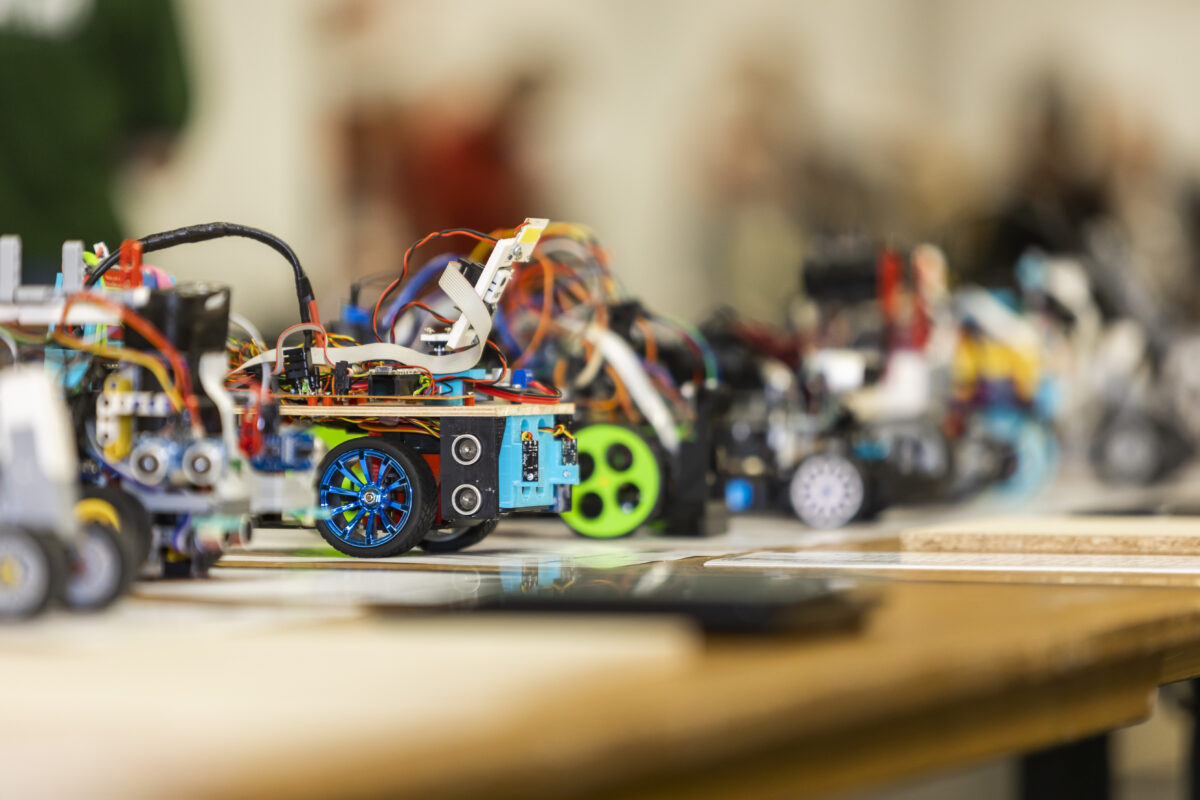At Red Hat, we develop enterprise software through an open-source development model. This implies that communities play a pivotal role in shaping everything we do – from our products and culture to the solutions we provide to our customers. Naturally, communities are at the center of our attention, and it is in our best interest to care about them. One way we give back to communities is by supporting STEM (Science, Technology, Engineering, and Mathematics) education for children, which aligns seamlessly with our Community and Social Responsibility (CSR) guidelines. This marks the initiation of my involvement with WRO.
WRO (World Robot Olympiad) is a non-profit organization that has been organizing a global robotics competition with the same name since 2004. In the beginning, teams from 12 countries participated in the competition. This year, 85 countries took part in WRO, making it one of the oldest, largest, and most prestigious robotics competitions in the world. Children and young adults aged 8-19 years old can participate in four categories: RoboSports, RoboMission, Future Innovators, and Future Engineers.
A great opportunity to support WRO unfolded when the fortuitous moment brought Joachim Schröder and me together at one of Red Hat’s events in July 2022. He revealed his plans to volunteer in a robotics competition, of which I was unaware; furthermore, the 2022 WRO International Finals were scheduled to happen in Dortmund, Germany. Given my previous engagement in both organizing and participating in robotics competitions and my graduation as a robotics major, it didn’t take much persuasion. I eagerly registered as a volunteer for WRO, completing an online application. Shortly after, I received an email from one of the volunteer coordinators, and after a few exchanges, I was officially part of the team!
Fast forward to November 2022, when I arrived in Dortmund to serve as a judge in the Future Engineers category. But first, let me take a moment to discuss what each category is about.
WRO Categories
In the RoboMission category, students design, construct, and program a robot to solve a specific challenge on a predefined arena, shown in Fig. 1. Although the arena is reconstructed before each competition, it requires some kind of “intelligence” from the robot, making decisions based on what it can measure on the field. These robots are made of LEGO blocks only. There are three age categories: Elementary (8-12), Junior (11-15), and Senior (14-19). In 2022, the teams were challenged with creating a care and transportation robot for a hospital, and in 2023, they had to create a robot that helps ships navigate, load, and unload in a harbor.
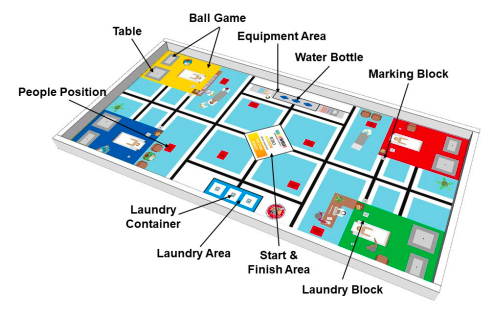
In the RoboSports category, robots compete in a sports game. This time the challenge is tougher, so there’s only one age group (11-19). The game changes every few years, and for the past two years, it was Double Tennis. You can get a vague understanding on how two robots play tennis looking at the game field on Fig. 2. Fear not, though! Every year, the organizers introduce some changes and tweak the rules so that teams are challenged to improve their robots and adjust to changing conditions!
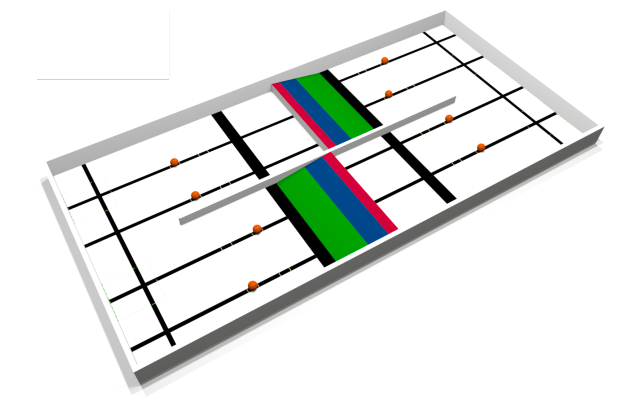
Future Innovators – undoubtedly the most creatively charged competition! Teams embark on the challenge of crafting an intelligent robotic solution that tackles a real-world problem, perfectly aligned with the competition theme (In 2022, the theme was “MY ROBOT MY FRIEND”). They enjoy the freedom to choose materials, software, and hardware, with the only constraint being that the project/device/robot must fit within a 2x2x2m booth for presentation during the competition. Just imagine, one of the teams had the ingenious idea of creating a robot designed to clean up canals from debris, ensuring they become navigable for ships (Fig. 3). How cool is that?
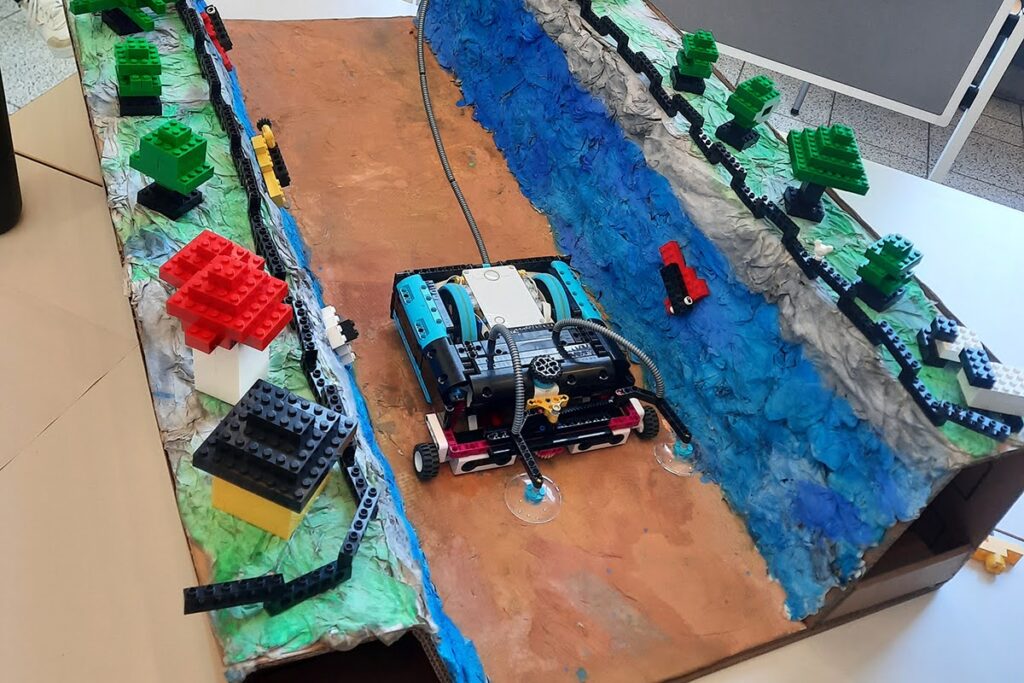
Future Engineers – finally, my personal favorite: a competition for older participants (14-19) that requires advanced knowledge of hardware to build a machine, software to program it, and algorithms to devise the optimal solution. The challenge here sounds simple – build a robot that can navigate the field (Fig. 4), avoid the colored obstacles, and finish three laps without hitting the walls. Believe me, though, building a self-driving “car” is never an easy task!
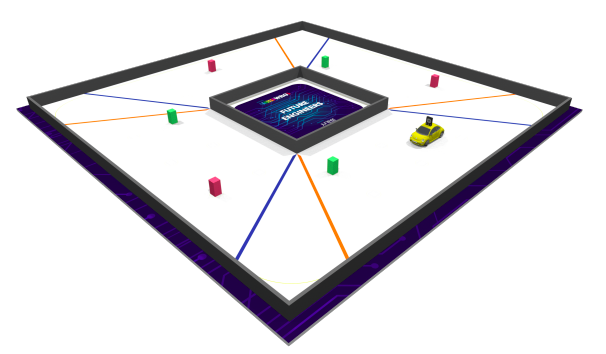
Dortmund’s Tech Extravaganza – WRO 2022
Let’s return to our story now. I was able to become a judge in the Future Engineers category due to my background in developing robots. This role requires some knowledge of robotics to assess whether the hardware of the robot fulfills the requirements or to read the source code. Each judge’s work begins a few weeks before the actual competition. Code repositories of the participating projects must be reviewed, and the documentation checked for completeness and against various criteria. Once this is done, each team already receives an appropriate number of points.
Entering the main building of Messe Dortmund on the eve of the event was undoubtedly a humbling experience. Tens of booths for Future Innovators, vast areas reserved for Future Engineers, multiple tables with RoboMission and RoboSports game fields ready to compete – this was undeniably an impressive sight. None of the robotic events I’ve ever participated in were half as big, but hey, after all, it’s the international finals of one of the most popular robotic events, with teams from like 6 continents, right? Picking up my package of goodies, including t-shirts and a hoodie, attending the first briefings, meeting my fellow judges, shaking many hands, taking a photo with all volunteers, and then it was time to rest before the event the next day.
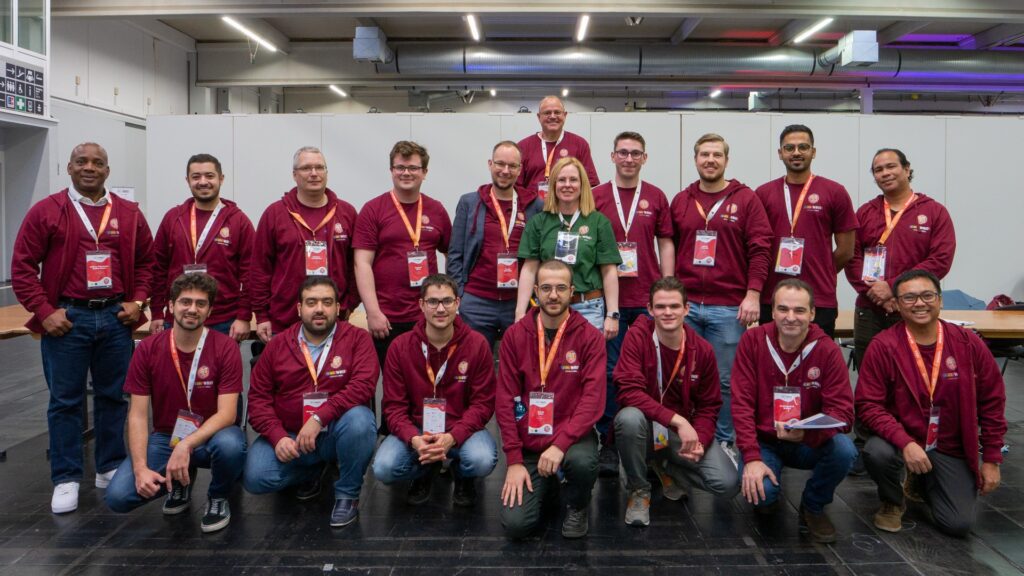
Opening Day
At the beginning of the first competition day, I didn’t really know what to expect, but I certainly did not expect the scale of the event. As the Messe Dortmund started filling up with 365 teams from 73 countries, it became quite crowded! More than 2500 international guests, along with over 3000 from Germany, arrived in Dortmund on November 17th. The day commenced with free practice and setup time for both teams and judges. Our team began by preparing the fields for the competition. Subsequently, we inspected all the robots, checking their weight, measurements, the number of motors, steering actuators, and buttons that can be pressed, among other criteria. It’s essential to lay the groundwork for the competition! Concurrently, teams calibrated their robots’ sensors, adjusting them to the lighting in the building and the type of material the field was made of, among other factors. These seemingly small details proved to be crucial later in the day when seconds decided who emerged victorious and who left with nothing.
In the early afternoon, following a hearty meal, all participants, volunteers, and invited guests moved to Signal Iduna Park. Yes, you read it right; the Welcome Activity took place in the football stadium of one of the very popular football clubs – Borussia Dortmund! Additionally, we utilized the largest free-standing grandstand in Europe – The Yellow Wall, or as the local fans call it – “Die gelbe Wand.” We even received a club scarf! Afterward, we returned to the venue to participate in the Opening Ceremony followed by dinner.
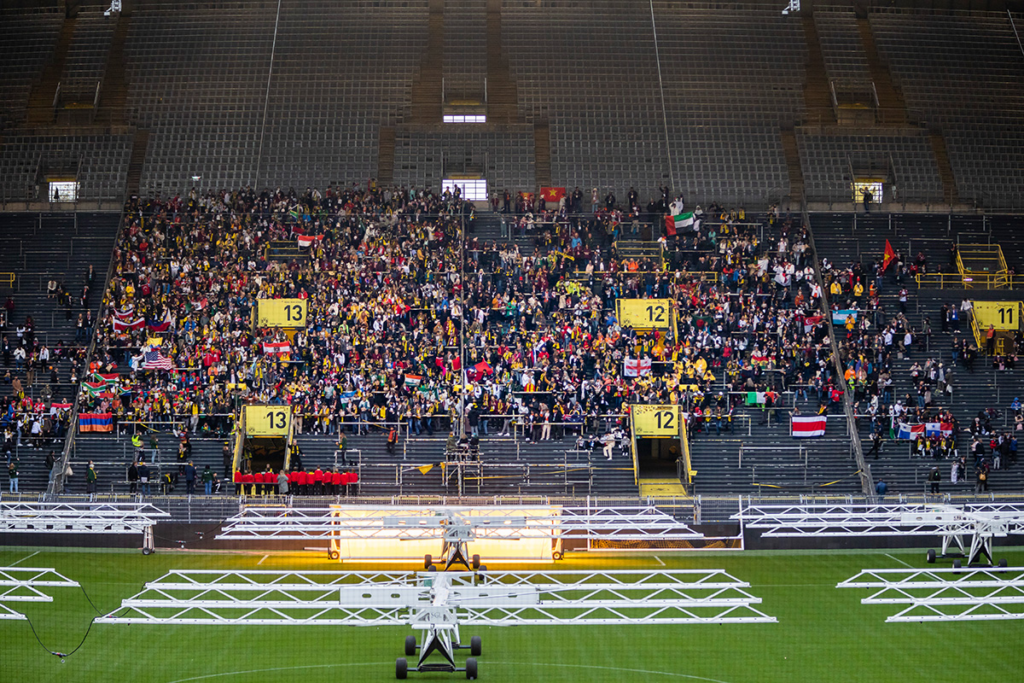
Day Two
The second day was fully occupied with official practices (this time, we measured the time for each run) and two rounds of qualifications. It concluded with the first final round. Fortunately, me and my fellow judges had a few breaks in between, allowing us to explore other parts of the venue. We observed brilliant inventions from Future Innovators, such as ATOM – a medical assistant robot from Ecuador, or AMICUS – a self-driving robot that helps deaf people communicate with the world (Fig. 7). These inventors came all the way from the Philippines! We also had the opportunity to experience the enjoyment of watching two robots play robo-tennis and witness firsthand how LEGO robots fulfill their tasks and navigate hospital floor plans.
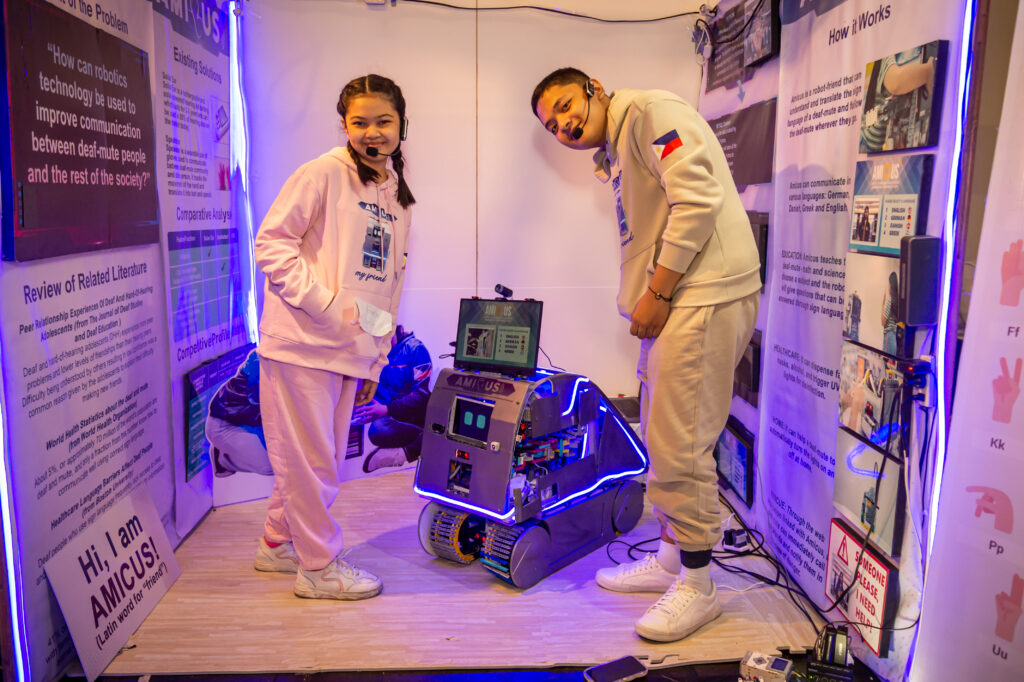
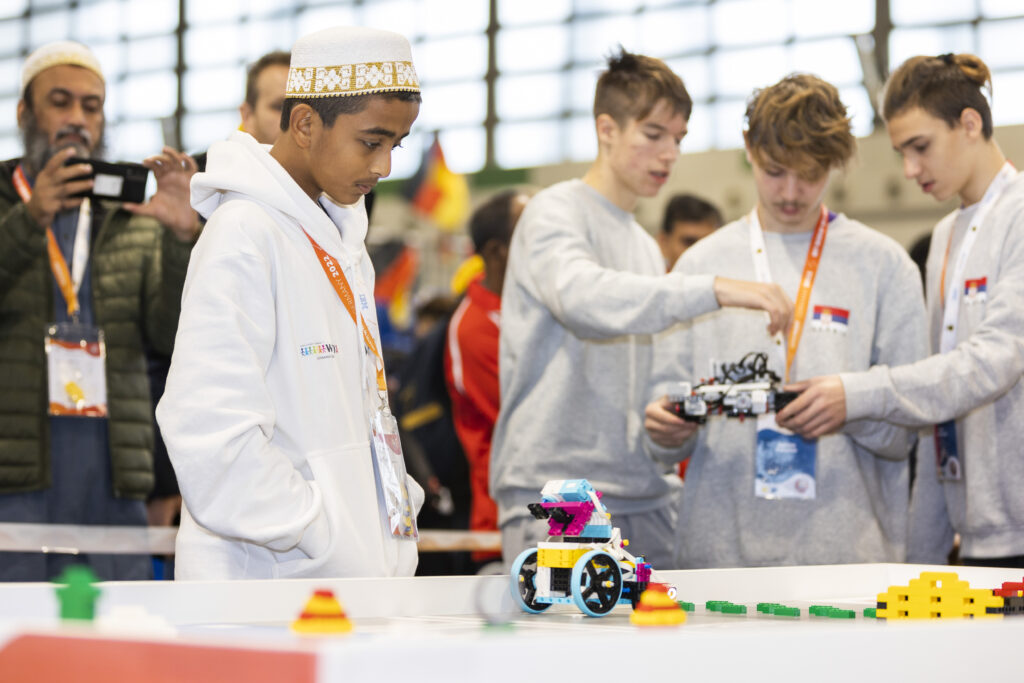
Event wrap-up
The third, and final, day provided the answer to a question that everyone had been asking since day one: Which team, country, and robot would dominate the contest? After running one last final round, everything became clear in the Future Engineers category. The team “Firing on all cylinders” (75 pts) from Chinese Taipei led by only one point, followed closely by “Team Spark” (74 pts) from the US and “Team Lazy-go” (73 pts) from Bangladesh, which also scored only one point less than the US team. To say that the competition was fierce would be an understatement! If you’d like to know who won in other categories, the complete scoreboard can be found at this link:
https://scoring.wro-association.org/en/event/scoring/29/wro-international-final-2022-germany
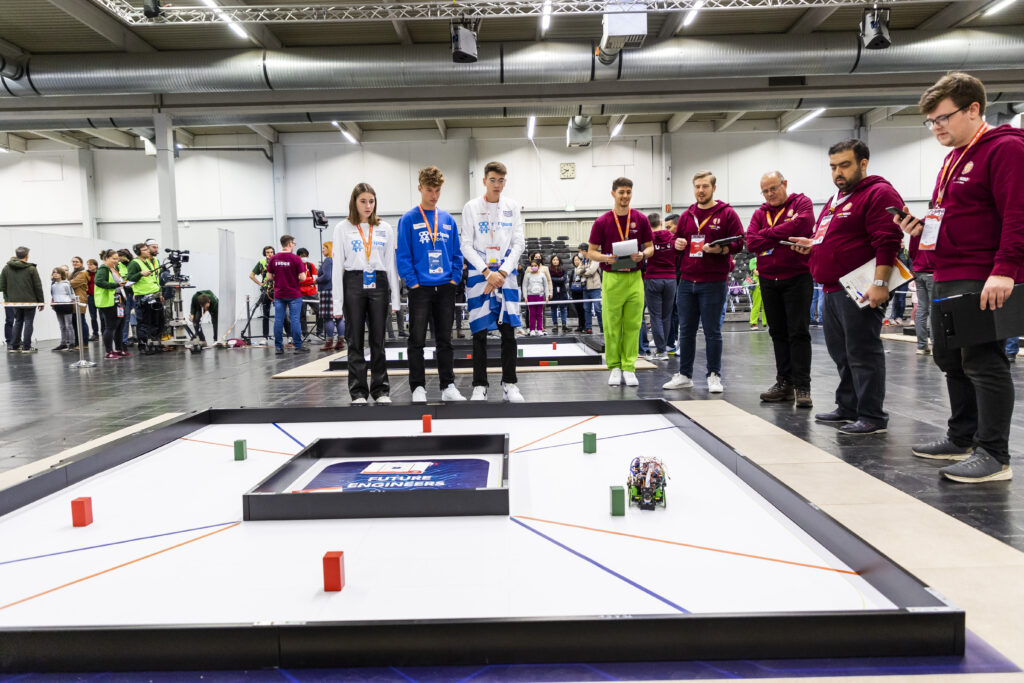
The closing ceremony wasn’t just a celebration for the winners; it also unveiled Panama as the host country for the 2023 International Finals. This year’s finals took place in Panama City at the beginning of November. While I couldn’t be present in Panama this year, I supported WRO on a national level. I was once again a judge at the Germany Finals in Freiburg, which took place in June. This event once again stood out for its exceptional organization (kudos to TECHNIK BEGEISTERT e.V.!), an abundance of enjoyment, and a lofty mission.
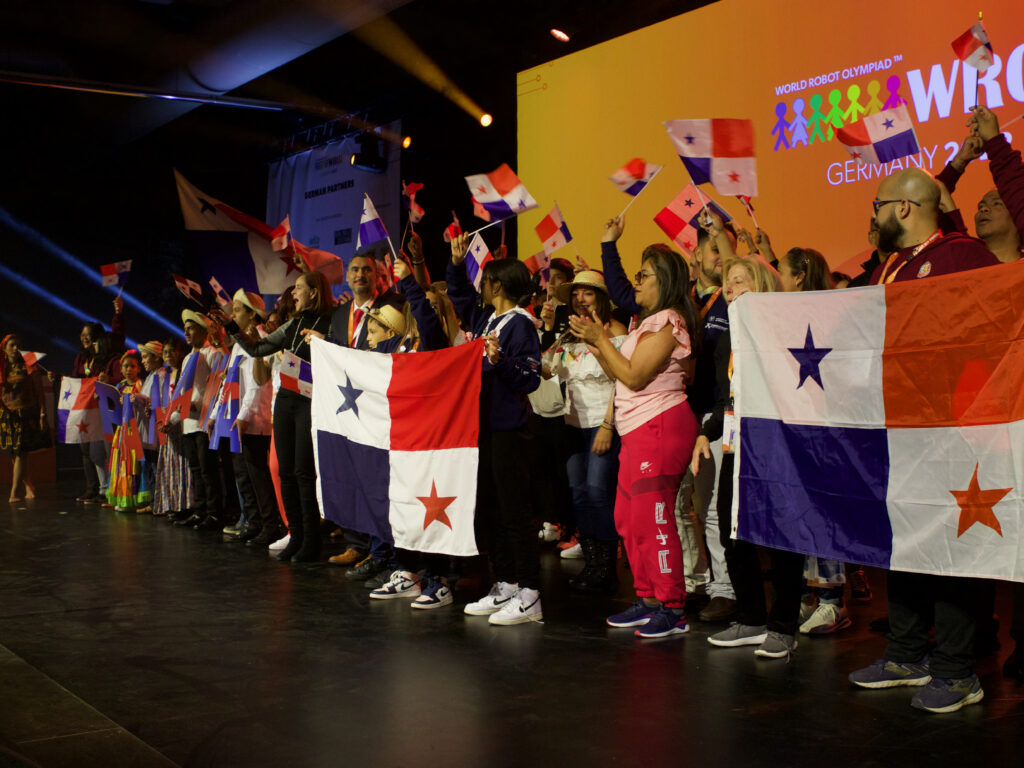
Closing thoughts and how you can join the cause
A colleague of mine, Mark Hosking, the driving force behind Red Hat’s involvement in WRO, often quoted Forest Witcraft, who once wrote: “A hundred years from now, it will not matter what my bank account was, the type of house I lived in, or the kind of car I drove. But the world may be different because I was important in the life of a boy.” This quote really appealed to me and I like to believe that the impactful work WRO accomplishes with the support of partners, sponsors, volunteers, and adult helpers will positively change lives. What brings me even more joy is that this change is not limited to boys; it also extends to girls, whose participation in WRO, and STEM in a broader sense, becomes more notable each year!
Are you interested in supporting WRO? Numerous approaches exist on how one can contribute to this worthy cause. If you enjoy working with children, consider becoming an adult advisor for teams. Each team requires one, and with proper guidance, the chances are high that these young people will achieve great things. You can also volunteer for WRO – reach out to your local WRO coordinator to assist in organizing the next event or to become a judge at the local, national, or international level. The World Robot Olympiad™ Association is an independent non-profit organization that channels all revenue from sponsorships and fees into promoting robotics in STEM education worldwide. You can contribute by raising funds, making donations, or generating interest in WRO within your company!
A big shoutout to my colleague, Mark Hosking, who led the efforts to organize Red Hat’s involvement in WRO. Additionally, a round of applause for Joachim Schröder and Frank Pauxberger, fellow Red Hatters who dedicated their time to become judges on WRO events. Many thanks to everyone who participated in the World Robot Olympiad, often during weekends, and supported the initiative, you rock! I hope we will see each other during the WRO 2024 season. Perhaps even during the international finals in Turkey?

